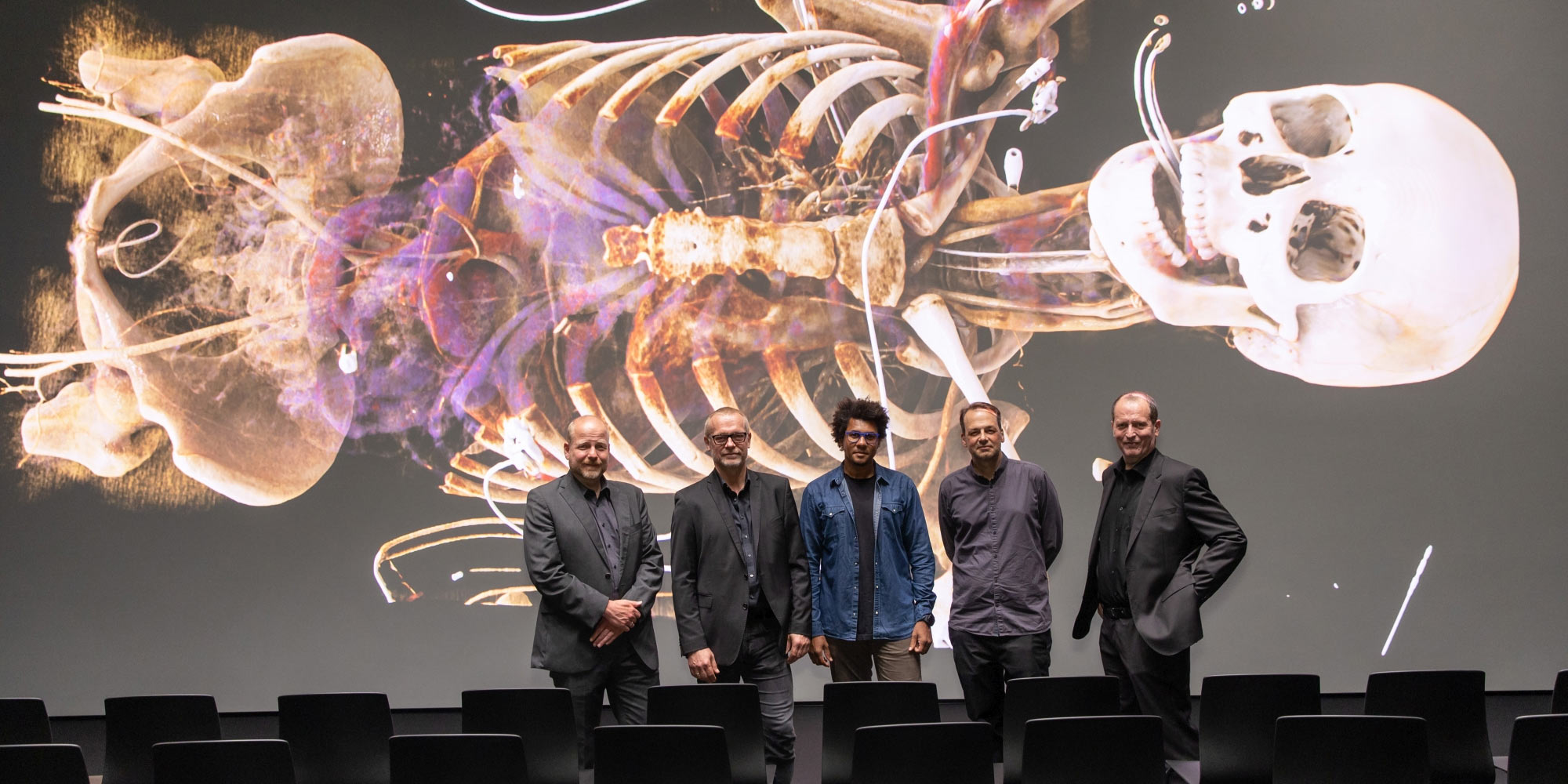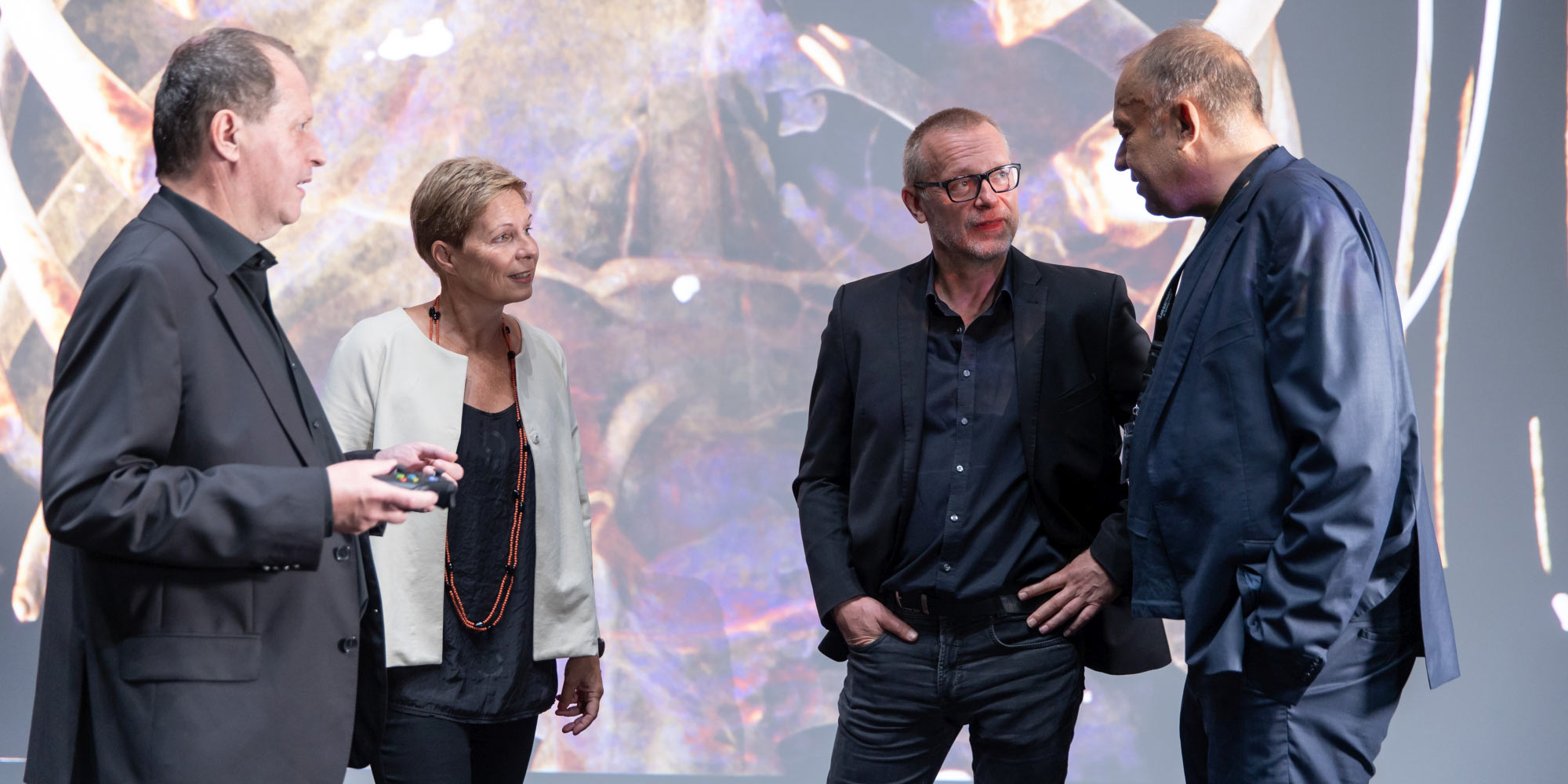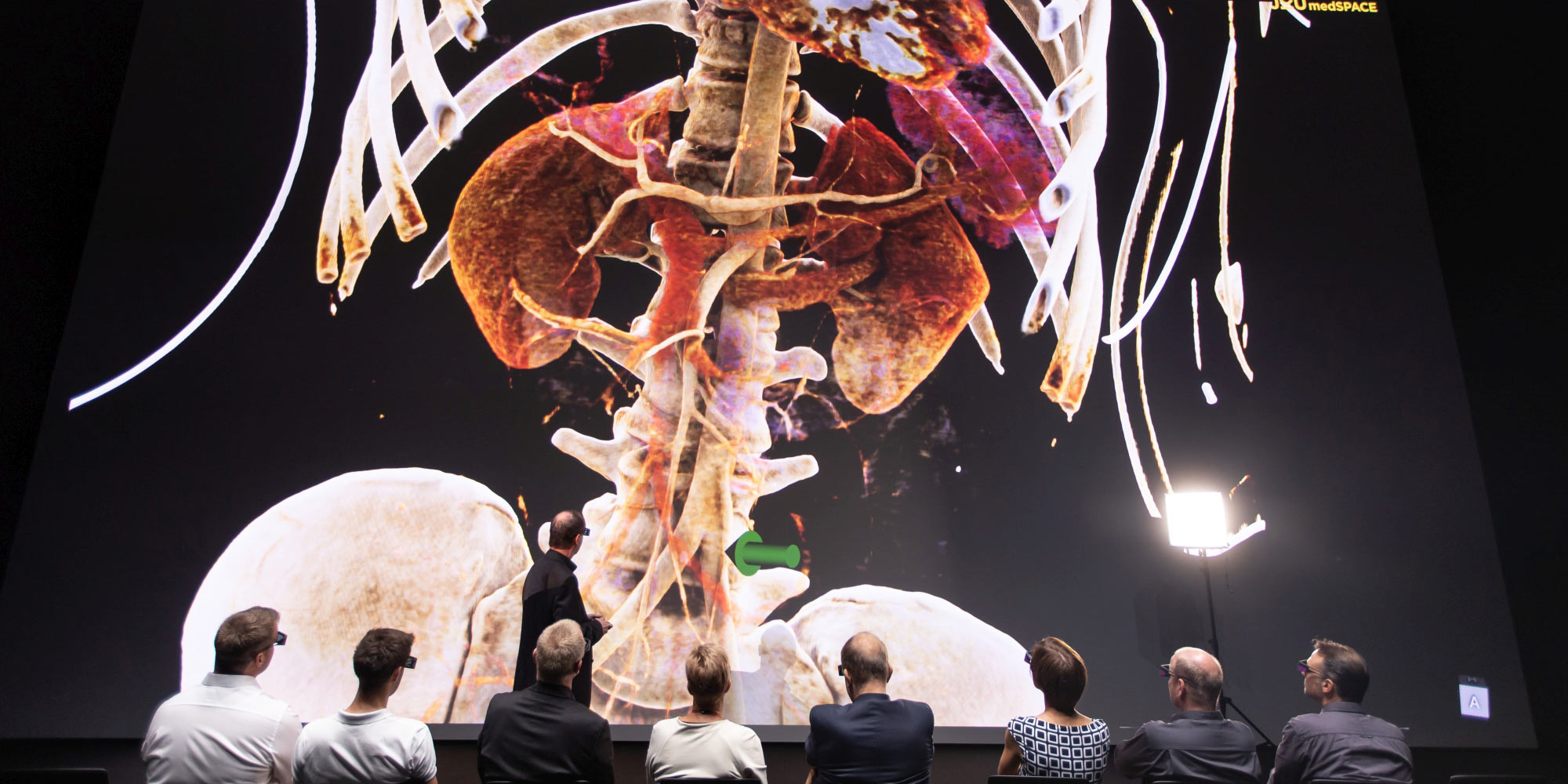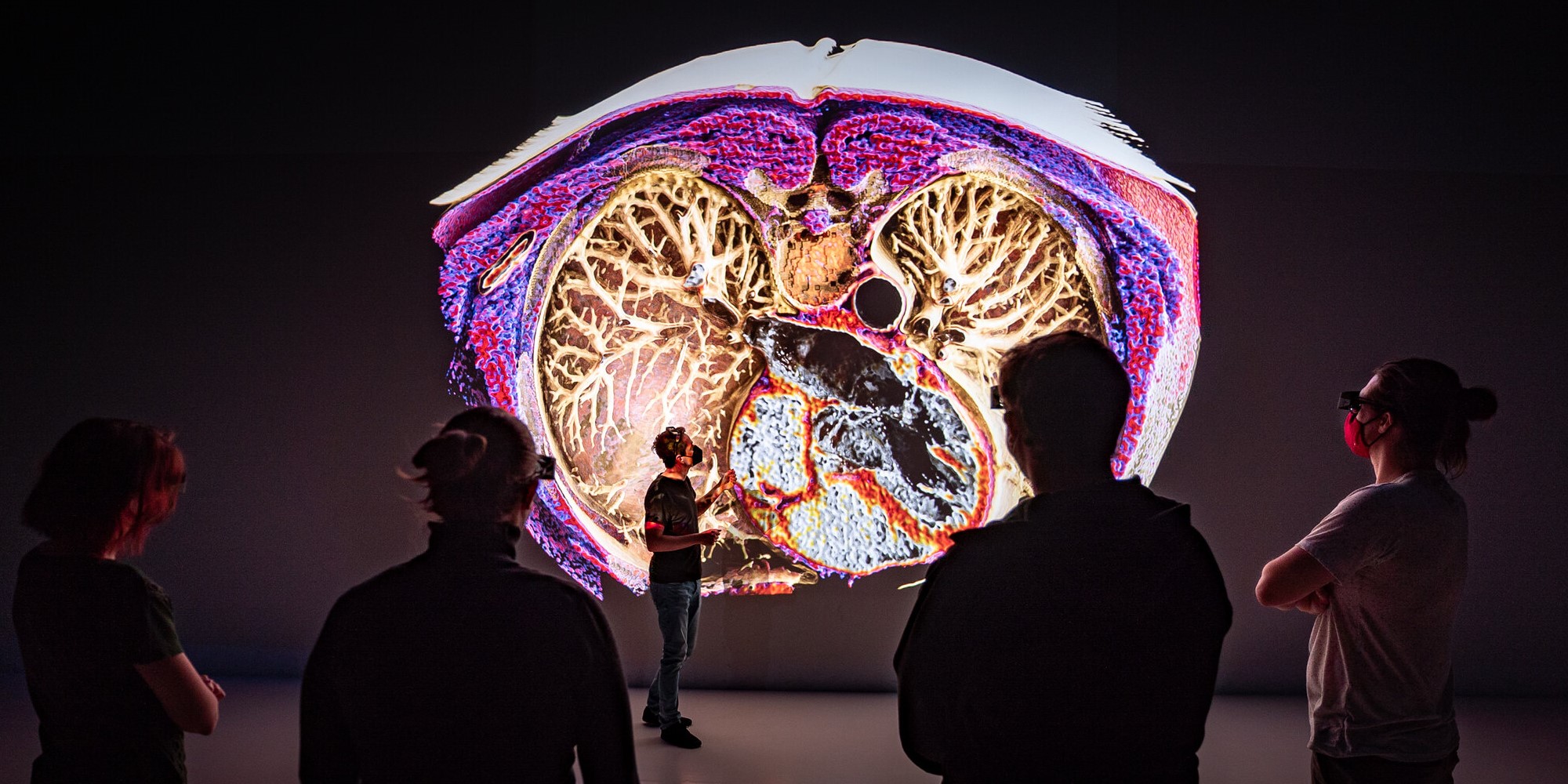The “Virtual Anatomy” software implemented by the Ars Electronica Futurelab in cooperation with Siemens Healthineers and the Johannes Kepler University has been awarded “Best Emerging Technology of the Year” at the prestigious E&T Innovation Awards – and snatched a silver medal as well. Congratulations to the teams!
The renowned E&T Innovation Awards annually honor the best innovations in different fields of technology. Besides being chosen as “Best Emerging Technology of the Year”, “Virtual Anatomy” also made second place in the category “Most Innovative Solution in Digital Health and Social Care”. Among the finalists there was yet another project by the Ars Electronica Futurelab, the immersive VR project “Deepandemia” that visualizes Covid-19 infection chains.
With “Virtual Anatomy” you experience MR and CT data from real patients in a completely new way: as photorealistic data in 8K stereoscopic 3D – allowing you to rotate the images freely and zoom down to smallest structures. The software that is available worldwide can be presented in virtual experience rooms like the Ars Electronica Center’s Deep Space 8K: with as much as 33 million pixels and up to 16-by-9-meter wall and floor projection.
“We at the Ars Electronica Futurelab are delighted that our collaboration is not only revolutionizing medical teaching starting in Austria, but has now also been recognized internationally with the E&T Innovation Award. As a laboratory of future systems, we’re working with numerous national and international partners on the technology of the future – and we see many other areas of application for ‘Virtual Anatomy’ in research and teaching”, says Roland Haring, Technical Director of the Ars Electronica Futurelab.







Since 2021, “Virtual Anatomy” is also used to teach anatomy in the worldwide unique JKU medSpace at the Johannes Kepler University in Linz – developed and implemented by the Ars Electronica Futurelab. Here, lecturers and students dive into anatomy in a completely new way, with the anonymized photorealistic 3D images from nearby hospital patients displayed in a stereoscopic 3D 4K projection at 14×7 meters.
The process is built on the “Cinematic Rendering” library by Siemens Healthineers: It imports data from MR and CT and renders the 3D images, and then “Virtual Anatomy” is used to add the interaction capabilities and display the data in stereoscopic 3D on the big screen and synchronize it on multiple workstations. The teams of Siemens Healthineers, the Johannes Kepler University and the Ars Electronica Futurelab have been successfully working together for several years now, guided by the expertise and visions by Prof. Franz Fellner from the JKU Medical Faculty and the Central Radiology Institute at the Kepler University Hospital in Linz. The collaboration culminated in the JKU medSpace, the extraordinary venue that might very well be the future of teaching anatomy for medical students.
Want to know more? Check out the Futurelab’s project pages on “Virtual Anatomy”, the JKU medSpace and “Deepandemia”. If you’d like more information or want to implement our technology, let’s get in touch!
